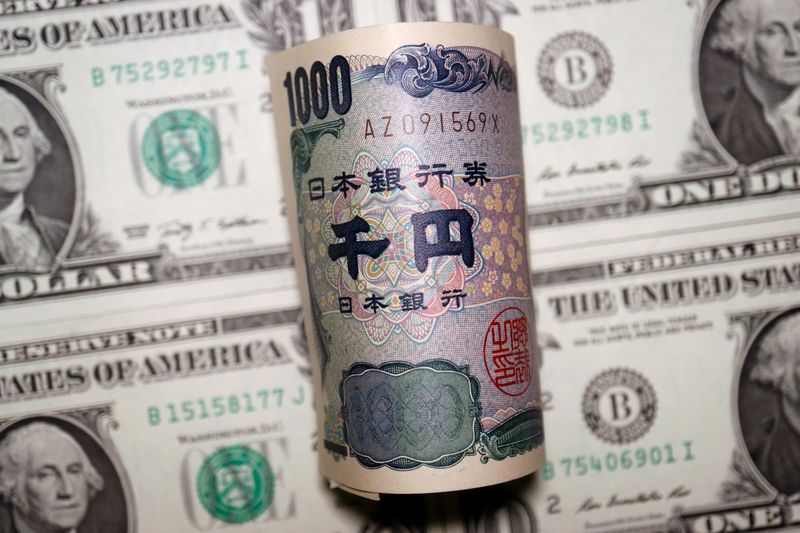By Tom Westbrook
SINGAPORE (Reuters) – The dollar drifted off multi-month lows on Tuesday, while the yen was perched near seven-month highs as investors held their breath for a potential policy shift at the Bank of Japan.
The euro reached a nine-month high on Monday at $1.0874, but was last loitering around $1.0830.
The yen hit a top of 127.22 per dollar during Asia hours on Monday, before easing a little during a holiday-thinned U.S. session to sit around 128.40.
Speculation is building about a change or end to Japanese yield curve control, given that the market pushed 10-year yields above a ceiling set by the Bank of Japan (BOJ) of 0.5% on Friday and Monday and that the amount of bond buying to defend it is starting to look unsustainable.
A newspaper report last week has also stoked expectation for a change, so traders are on the lookout for a sharp reaction even if the BOJ makes no move. The yen rose 3% against the dollar last week, and one-week implied volatility for dollar/yen is at its highest since March 2020.
“The market has run pretty hard with this story and is looking for a follow up,” said Tony Sycamore, an analyst at brokerage IG Markets.
He sees three main possibilities: no policy change, a tweak similar to a move in December to widen the 10-year yield target band, and the total abandonment of yield curve control, with the latter likely to drive the most extreme market response.
“The yen would explode higher, Japanese government bond yields would explode higher and global yields would go higher,” he said.
In the meantime, foreign exchange trade may be driven by Chinese economic data due around 0200 GMT, which is expected to be weak, British labour data, U.S. earnings and Canadian inflation figures.
The U.S. dollar index bounced from a seven-month low of 101.77 made a day ago and held at 102.28. Sterling touched its highest since mid-December at $1.2288 and was last at $1.2199.
Annual growth in Chinese gross domestic product for the fourth quarter is expected to be reported as only 1.8%, so any upside surprise could lend support to trade-exposed currencies, such as the Aussie.
The Australian dollar hit a five-month high just above $0.70 on Monday and was last firm at $0.6972. The New Zealand dollar held at $0.6394. [AUD/]



